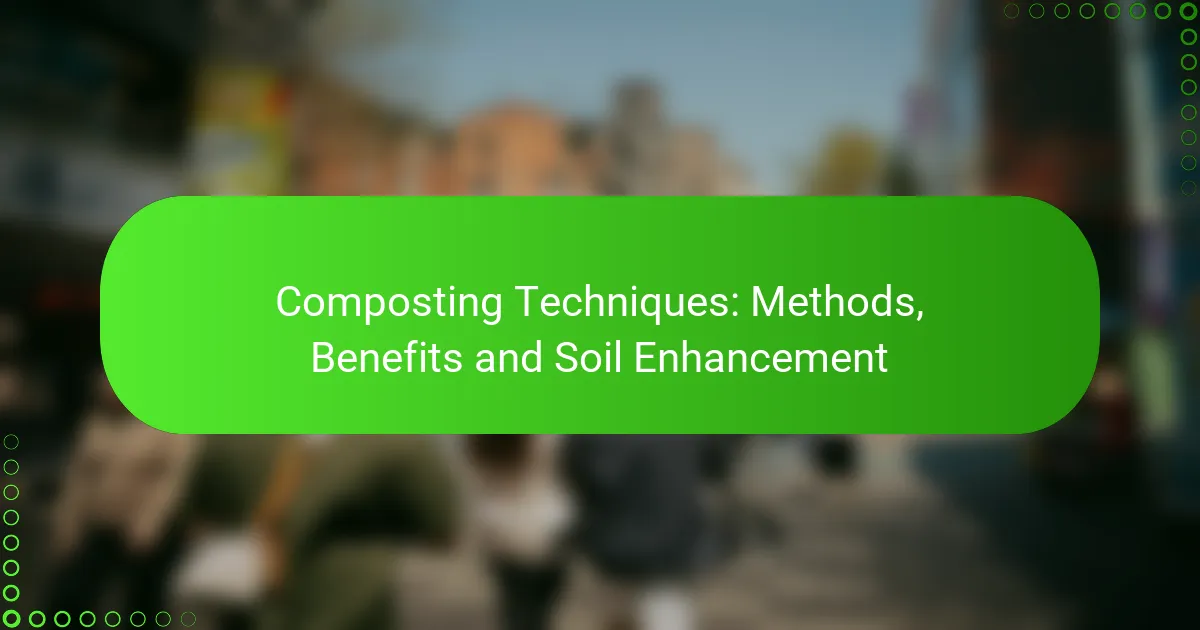Raised beds are an effective gardening solution that enhances drainage, improves soil quality, and provides easier access for gardeners. By constructing these beds with suitable materials, you can create an optimal growing environment that promotes healthier plants and higher yields. Additionally, managing the soil within raised beds through careful selection and regular amendments is crucial for sustaining plant health and maximizing productivity.

How to construct raised beds in South Africa?
Constructing raised beds in South Africa involves selecting suitable materials and following a straightforward building process. These beds can enhance drainage, improve soil quality, and provide better access for gardening.
Materials needed for raised bed construction
To build raised beds, you will need durable materials that can withstand local weather conditions. Common choices include untreated wood, bricks, or stone. For wood, options like pine or cedar are popular due to their resistance to rot.
In addition to the main structure, gather screws or nails, a level, and a measuring tape. If you plan to line the bed, consider using landscape fabric to prevent weeds from growing through.
Step-by-step construction process
Start by selecting a location that receives ample sunlight and has good drainage. Measure and mark the dimensions of your raised bed, typically ranging from 1 to 1.5 meters in width and 2 to 3 meters in length.
Next, cut your materials to size and assemble the frame using screws or nails. Ensure the corners are square and the structure is level. Once assembled, place the bed in the chosen location and fill it with a mix of quality soil and compost to promote healthy plant growth.
Common design options for raised beds
Raised beds can be designed in various shapes and sizes to suit different gardening needs. Traditional rectangular beds are popular, but circular or tiered designs can add visual interest and maximize space.
Consider incorporating pathways between beds for easy access. You can also add features like trellises for climbing plants or benches for seating. Ensure that the design allows for adequate drainage and sunlight exposure for your plants.

What are the benefits of raised beds?
Raised beds offer numerous advantages for gardening, including better soil management, improved drainage, and increased accessibility. They create an optimal growing environment that can lead to healthier plants and higher yields.
Improved soil drainage
Raised beds enhance soil drainage by elevating the planting area above ground level, allowing excess water to flow away more easily. This is particularly beneficial in areas with heavy clay soils that retain moisture, which can lead to root rot and other issues.
To maximize drainage, consider using a mix of soil types, such as incorporating sand or organic matter. This combination can help create a well-aerated environment that promotes healthy root growth.
Enhanced pest control
Raised beds can help reduce pest problems by creating a physical barrier between plants and ground-dwelling pests. The elevation makes it harder for certain insects and rodents to access your crops, leading to healthier plants.
Additionally, you can easily implement pest control measures, such as row covers or traps, in raised beds. Regular monitoring and maintenance can further minimize pest infestations.
Extended growing season
Raised beds often warm up faster in the spring, allowing for earlier planting and a longer growing season. The soil in raised beds can retain heat better than ground-level gardens, which is advantageous in cooler climates.
To take full advantage of this benefit, consider using row covers or cloches to protect young plants from late frosts. This practice can help you maximize your harvest throughout the year.

How to manage soil in raised beds?
Managing soil in raised beds involves selecting the right soil composition, maintaining its quality, and regularly amending it with organic materials. Proper soil management ensures optimal plant growth and minimizes nutrient depletion over time.
Soil composition recommendations
For raised beds, a balanced soil mix typically includes equal parts of topsoil, compost, and a lightweight material like peat moss or coconut coir. This combination provides good drainage, aeration, and nutrient retention.
Consider local conditions when sourcing materials. For instance, if you live in an area with heavy clay soil, you might want to increase the proportion of compost to improve drainage and texture.
Best practices for soil maintenance
Regularly check the soil moisture and pH levels to ensure they remain within optimal ranges for your plants. Most vegetables thrive in slightly acidic to neutral pH levels, around 6.0 to 7.0.
Mulching can help retain moisture and suppress weeds. Organic mulches, such as straw or wood chips, break down over time and contribute to soil health. Avoid using non-organic materials that can hinder soil quality.
Organic amendments for raised beds
Incorporating organic amendments like well-rotted manure, worm castings, or compost can significantly enhance soil fertility. Aim to add these amendments at least once or twice a year, depending on the crop rotation and nutrient needs.
Other beneficial amendments include bone meal for phosphorus and greensand for potassium. Always follow recommended application rates to avoid nutrient imbalances.

What are the costs associated with raised beds?
The costs associated with raised beds can vary significantly based on materials, labor, and ongoing maintenance. Understanding these expenses helps in budgeting for both initial setup and long-term care of your garden.
Material cost breakdown
The material costs for raised beds typically range from moderate to high, depending on the type of materials chosen. Common options include untreated wood, composite materials, metal, or stone, with prices varying from around $10 to $50 per square foot.
For example, untreated cedar or redwood is popular due to its durability and resistance to rot, costing more than standard pine. If you opt for composite or metal, expect to pay a premium but gain longevity and reduced maintenance.
Labor costs for construction
Labor costs for constructing raised beds can depend on whether you do it yourself or hire a professional. DIY projects may incur minimal costs, primarily for tools and materials, while hiring a landscaper can range from $50 to $100 per hour.
Consider the complexity of your design; simpler rectangular beds will require less labor than intricate shapes or multi-level structures. If you choose to hire help, getting multiple quotes can ensure you find a fair price.
Long-term maintenance expenses
Long-term maintenance expenses for raised beds include soil replenishment, pest control, and potential repairs. Annually, you might spend around $20 to $100 on soil amendments and organic fertilizers to keep your plants healthy.
Additionally, factor in costs for pest management, which can vary based on your gardening practices. Regular inspections and preventive measures can minimize these expenses, ensuring your raised beds remain productive over time.

What tools are essential for raised bed gardening?
Essential tools for raised bed gardening include basic hand tools, soil testing kits, and irrigation systems. These tools help ensure effective construction, soil management, and plant care, leading to healthier gardens and better yields.
Recommended gardening tools
Key gardening tools for raised beds include a trowel, hand fork, and pruners. A trowel is perfect for digging and planting, while a hand fork helps aerate the soil. Pruners are essential for maintaining plant health by trimming dead or overgrown branches.
Consider investing in a garden kneeler or seat to ease the strain on your knees and back while working. A good quality pair of gardening gloves can also protect your hands from thorns and soil irritation.
Soil testing kits
Soil testing kits are crucial for understanding the nutrient levels and pH of your raised bed soil. These kits typically include test strips or solutions for measuring nitrogen, phosphorus, potassium, and acidity. Knowing these factors helps you amend the soil appropriately for optimal plant growth.
When using a soil testing kit, follow the instructions carefully to collect samples from different areas of your raised bed. This ensures a comprehensive analysis, allowing you to make informed decisions about fertilization and soil amendments.
Irrigation systems for raised beds
Effective irrigation systems are vital for maintaining consistent moisture levels in raised beds. Drip irrigation is a popular choice, as it delivers water directly to the plant roots, reducing waste and minimizing disease risk. Soaker hoses are another option that allows for even moisture distribution.
When setting up an irrigation system, consider the size of your raised bed and the specific water needs of your plants. Timers can be added to automate watering schedules, ensuring your plants receive adequate hydration without overwatering.

How to choose the right location for raised beds?
Choosing the right location for raised beds is crucial for successful gardening. Look for a spot that receives ample sunlight, has good drainage, and is easily accessible for maintenance.
Sunlight exposure
Most vegetables and flowers thrive with at least six hours of direct sunlight daily. Observe your yard throughout the day to identify areas that receive sufficient light. Avoid placing raised beds in shaded spots created by trees or buildings.
Drainage considerations
Good drainage is essential to prevent waterlogging, which can harm plant roots. Select a location that naturally drains well or consider building raised beds on slightly elevated ground. If your area has heavy clay soil, ensure the beds are at least 30 cm high to facilitate drainage.
Accessibility and convenience
Position your raised beds close to your home or garden shed for easy access to tools and water. Ensure there’s enough space around the beds for walking and maintenance tasks. A pathway of at least 60 cm wide will allow for comfortable movement.
Soil quality
While raised beds allow you to control soil quality, starting with a good base is beneficial. Test the native soil for pH and nutrient levels to understand what amendments may be necessary. If the native soil is poor, consider filling the beds with a mix of high-quality topsoil and compost.










